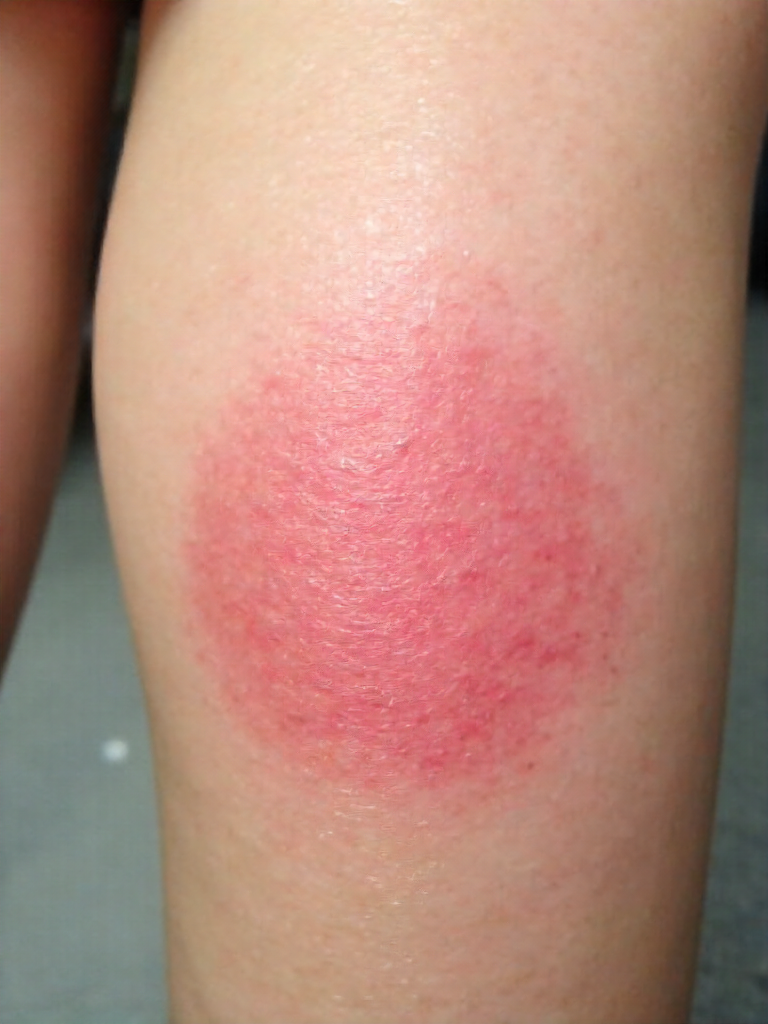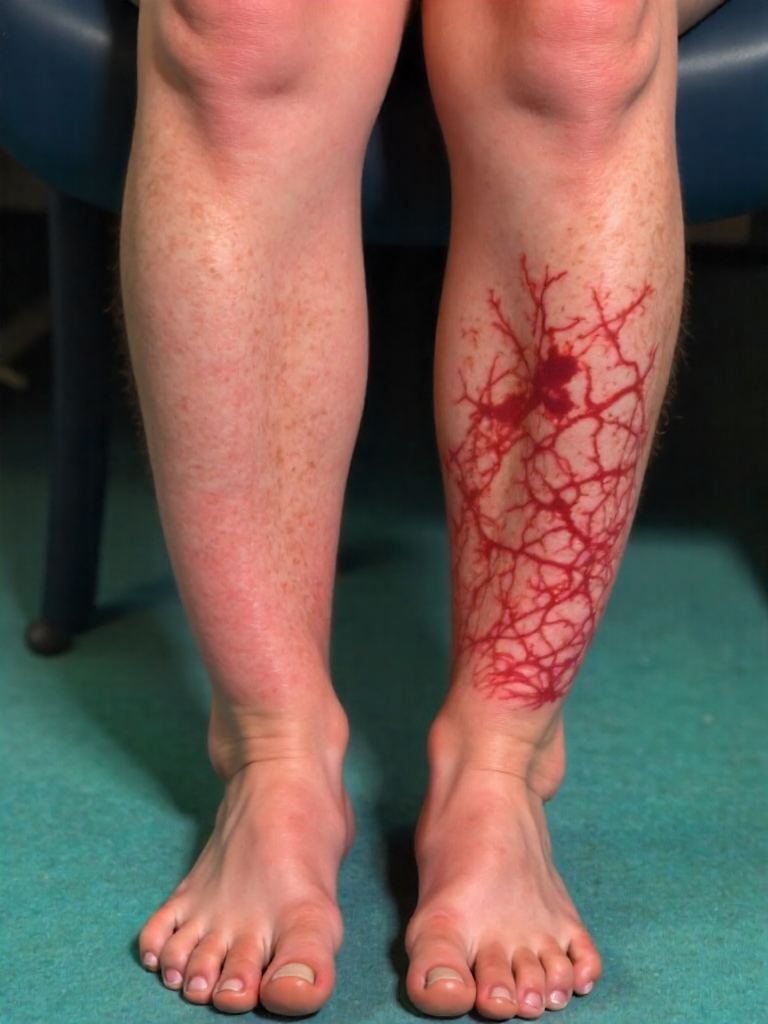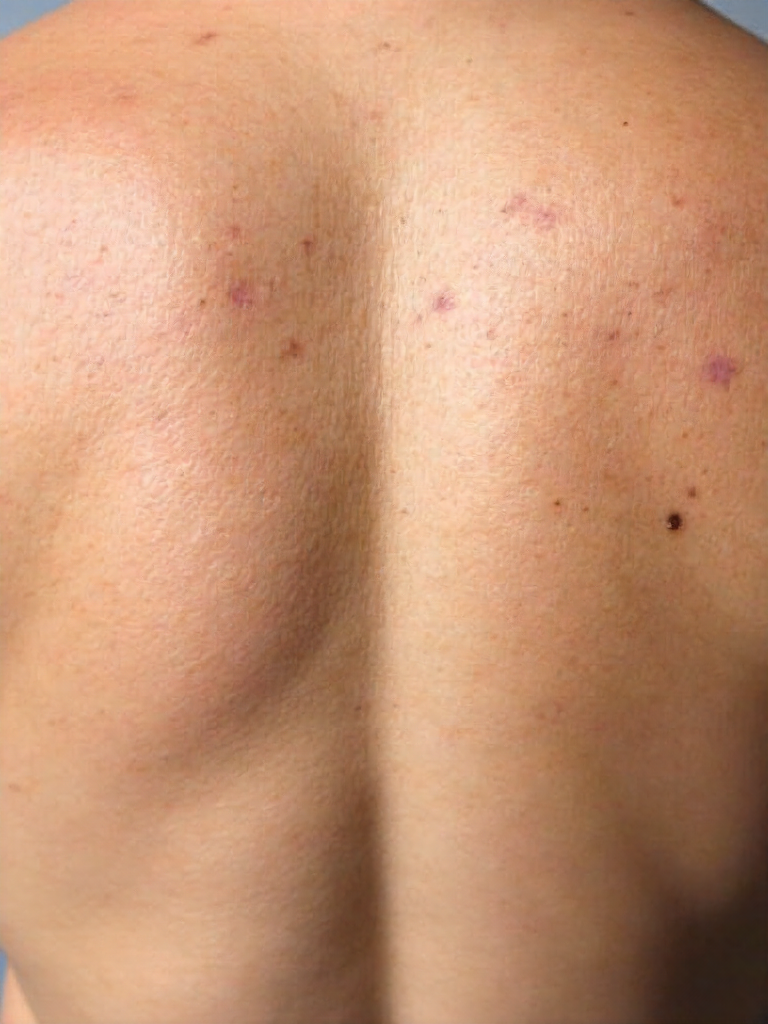The condition, known as livedo reticularis, may initially appear as a harmless cosmetic change—a faint, lace-like pattern of purple and blue discoloration spreading across the skin. However, this phenomenon is more than a superficial issue. In some cases, it is temporary and benign, while in others, it can serve as an early indicator of underlying health problems.
Livedo reticularis refers to a net-like, reddish-purple discoloration that often appears on the legs, arms, or torso. It occurs when blood flow in the small vessels beneath the skin becomes uneven or stagnant, leading to visible patches where oxygen levels are reduced. The pattern tends to intensify in cold environments and may fade as the skin warms, which often leads people to overlook it as a mere circulatory quirk. Yet, its persistence or worsening could signal more serious concerns.
There are two primary types of livedo reticularis: primary and secondary. The primary form is typically harmless and triggered by cold exposure, commonly affecting children, young adults, and those with fair skin. It usually resolves as the body warms up. In contrast, secondary livedo reticularis is linked to deeper medical conditions, such as vascular diseases, autoimmune disorders, or clotting abnormalities. This type does not improve with warming and requires medical investigation to identify its root cause.

The condition can stem from various factors. Cold exposure is the most frequent and usually non-threatening trigger. However, vascular diseases like vasculitis or peripheral artery disease disrupt blood flow, leading to more persistent symptoms. Autoimmune disorders, including lupus, rheumatoid arthritis, or antiphospholipid syndrome, may also manifest through skin changes. Blood clotting issues, such as thrombophilia, and certain medications used for Parkinson’s disease or hypertension can contribute to the appearance of livedo reticularis. In rare instances, it has been associated with severe systemic illnesses like Sneddon’s syndrome, polyarteritis nodosa, or cholesterol embolization.
Key symptoms include the characteristic mottled, web-like skin pattern. Additional warning signs may involve persistent coldness or numbness, leg pain, cramping, or the development of ulcers. Neurological symptoms, such as headaches, vision disturbances, or strokes, can also accompany the condition if it is linked to systemic disease. While temporary discoloration is often harmless, lingering or worsening patterns should prompt further medical attention.

Diagnosis typically begins with a physical examination and a review of personal and family medical history. Depending on symptoms, doctors may order blood tests to check for autoimmune markers, clotting abnormalities, or inflammation. A skin biopsy might be performed to confirm vascular inflammation, and imaging studies like ultrasounds can assess blood flow and vessel health.

Treatment depends on the type of livedo reticularis. For the primary form, warming the body and avoiding cold exposure often suffice. In cases of secondary livedo reticularis, addressing the underlying condition is critical. This may involve anticoagulants to prevent clots, immunosuppressants for autoimmune disorders, or medications to improve circulation. Lifestyle modifications, such as quitting smoking, staying active, and managing cholesterol or blood pressure, can also help reduce risks.

Medical consultation is recommended if the discoloration persists despite warming, if pain or ulcers develop, or if the pattern is accompanied by systemic symptoms like joint pain, fatigue, or neurological issues. Early intervention is vital for identifying and managing serious underlying conditions.
Recognizing the difference between benign skin changes and signs of systemic illness is essential. By paying attention to subtle patterns on the skin and seeking medical guidance when needed, individuals can detect potential health issues at an early stage, when treatment is most effective.
